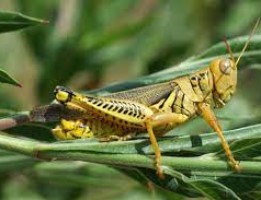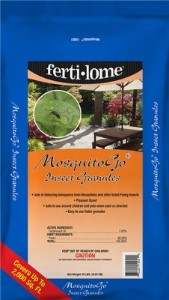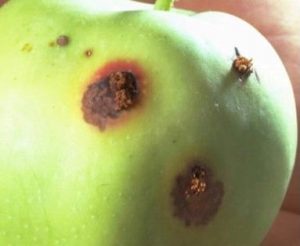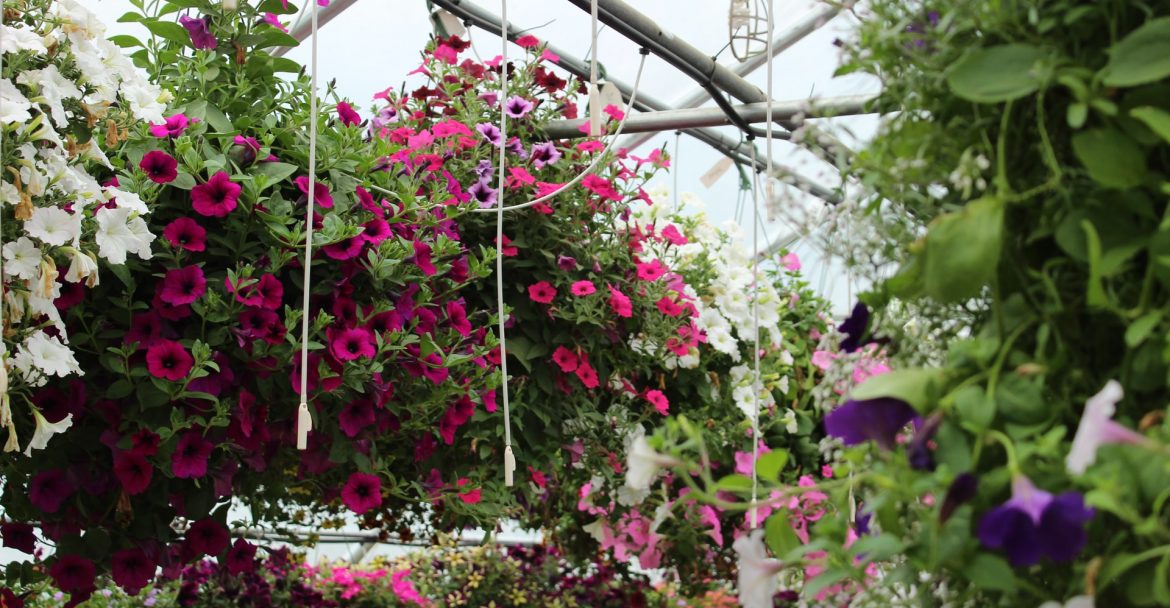Get the jump on Grasshopper control before it’s too late!

The annual invasion of grasshoppers began early this year despite our cool wet spring. Already, we are seeing thousands of 1/2” long hoppers starting to infest gardens, flowerbeds, landscape plantings and even lawns. While there are a lot of very effective options for controlling the grasshopper population in your area, one of our most well known and proven options is not available this year – Nolo Bait. Don’t worry, we have some potent products that will easily replace the Nolo bait for this season, and maybe, if you love the results, for years to come.
Nolo Bait is a biological spore that only affects grasshoppers, and it is completely non toxic to people, pets, beneficial insects and basically everything else that is not a grasshopper. There is no best way to describe how it works, but it essentially is similar to giving the hoppers a really bad case of the flu – it makes them sick, lethargic, they lose their appetite, they don’t reproduce and in most cases it eventually kills them, allowing the other grasshoppers to eat them and become infected as well. It works best when conditions are dry, their food source has turned brown and dried up, and where you can get them to eat the bait in their natural habitat (like the vacant lot next door or the empty field out back – where the soil is rarely disturbed and they normally lay their eggs each year) long before they invade your yard. It’s a great option for long-term control, but it isn’t a perfect fit for everyone.


One of our favorite new options is a natural, essential oil repellent that confuses and annoys the grasshoppers, as well as many other flying insects like mosquitoes and moths, to the point that they will just move somewhere else – like your neighbor’s yard! Cedarwood Oil smells great, is non-toxic to people and pets, won’t affect beneficial insects like bees or lady beetles, and drives unwanted insects away from treated areas. We’ve used it both as a granule and as spray applications with amazing results. Of course, it’s not 100% perfect, but it will noticeably decrease your hopper density down to manageable levels.]
Your other options include most synthetic pyrethroid insecticides like Hi-Yield Bug Blaster (Bifenthrin), Hi-Yield Indoor/Outdoor (Permethrin), and some of the newest generation insecticides Cyonara (Lambda-Cylohathrin) and Sevin (Zeta-Cypermethrin). These are super effective at knocking down hoppers while they are small, but still safe to use in landscape areas, lawns, and in most fruits and vegetables. For quick results, these sprays will kill grasshoppers in minutes and give you weeks of residual control for additional outbreaks.
Even though Nolo Bait is unavailable for this season, don’t stress. We have some excellent options for you to keep your garden plants and landscape safe from the hopper invasion.
Spray now to prevent wormy apples (Coddling Moth)!

It’s time to apply the first insect spray for apples and pears for the year. USU extension service has recommended that between June 2 and June 10 is prime time for treating pome fruits for the first flight of codling moths for 2022. If you are not familiar with codling moth larva damage, it’s the worms that regularly infest apples and pears. Definitely not our favorite kind of protein supplement. Let us tell you how to prevent them for the season.

Codling moths generally have 3 major flights during the summer months – June, July and August. USU Extension places traps all over the State to trap the adults and to predict the best timing for each application. Normally the first and last flights are the heaviest, and often-times some of the flights overlap. The most important thing to keep in mind, is that if your fruit is not protected by an insecticide when the larvae hatch, then you end up with damaged fruit. In Cache Valley, you should have your first application on apples and pears by early next week. (Week of June 13th) We also anticipate the 2nd flight occurring sometime in early July, so be prepared.

So what product should you use and how often? For each insecticide, timing of each application depends on the duration of the product. For example, Sevin, Acetamiprid (Assail), Imidan, and Bonide Fruit Tree and Plant Guard all will last about 18-21 days and require a minimum of 3-4 sprays to protect the fruit until early September. Ferti-lome Fruit Tree Spray, Malathion, and Bonide Fruit Tree Spray all last approximately 10-14 days and require 6-7 applications for full coverage. If you choose to stay 100% organic, you do have some great options available – Natural Guard Spinosad and Ferti-lome Fruit Tree Spray also provide 10-14 day protection with the safety and reassurance of an all-natural product.
If you are still completely confused as to what to do and where to start, please come in to Anderson’s and we can help walk you through the process. We are here to help you find the best product to protect you and your fruit from damaging insects. Just remember, if you don’t do anything, you will still have some fruit without damage, but it will only be 10-15%; if you spray effectively, the coddling moth larvae will only damage about 10-15% total. That’s a big difference in your crop yield for the year.
If you live in Northern Utah and still don’t know what to do, call our Services Division at Logan Extermination – 435-752-8450 – and set up our yearly service to spray your trees for you. Let us do all the work, and you forget about all the worries. No stress, we’ve got you covered.
Mark’s Hanging Basket Secret Recipe!
Ever wonder how we keep our hanging baskets looking amazing all summer long? Last year we had them blooming until after Halloween! We use the same formula to make the flower beds on Center Street go Berserk. Watch our newly updated video that walks you through our Secret Recipe to success with Hanging Baskets and Planters.


